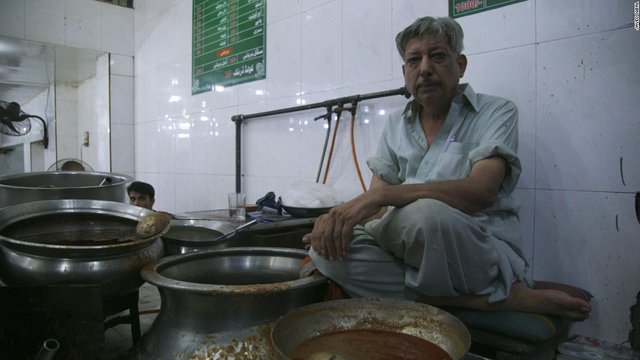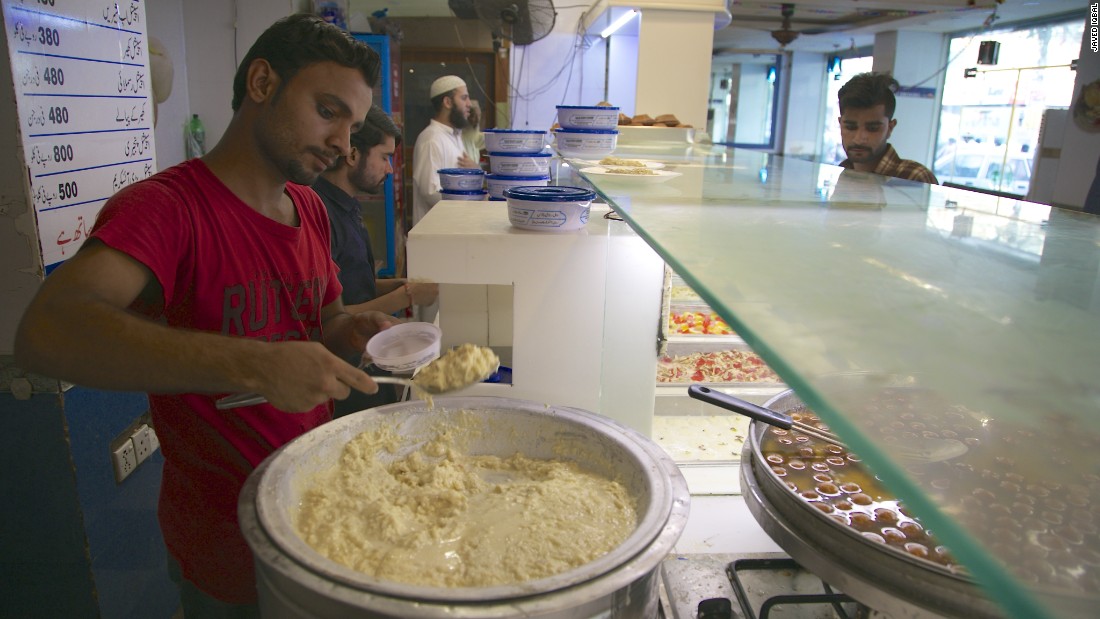A taste of India in the heart of Pakistan
Karachi is not a city that you will often see on the silver screen. Not "pretty"; His descriptions usually forget about the punishment and darkness of terror, crime and death. It's messy, sometimes overwhelming, and often punches those who love it.
But this city, the home of almost 27 million people, also has a persistence to be the stubborn representative of Pakistan, the nation's soul, if it will.
Karachi is also aggressive.
The honking horns are uninterrupted, the annoying call of distant sirens does not stop, nor the cries of traffic or the crazy racket of the crow.
Sometimes, though, there are spaces of silence. At dusk, when the dust of the day is resolved, you realize that this was once a sleeping harbor city - one that 70 years ago exploded in a megalopolis when refugees from all over the Indian subcontinent arrived almost overnight after the South Asian subcontinent was divided into India And Pakistan.

70 years after Partition, food unites two cities where recipes are infused with memories.
People lost their homes and the families broke down as Indian Muslims flocked to newly formed Pakistan, while Hindu and Sikhs headed in the opposite direction in one of the biggest migrations in human history.
There are not many people still alive who recall the seminar and traumatic events of the summer of 1947. There is still little to remember what life was before they eradicated from their homes and transplanted on both sides of the border.

But there is a place in the heart of Karachi where some of the last magic still climbs.
It is a street clad with British-built yellow limestone buildings, intertwined with gray concrete blocks of brutal architecture of the 20th century.
Muhammad bin Qasim is officially called, but if you ask for this, you will most likely meet with empty views.
Most locals call it Burns Road, named James Burns, 18th-century 18th-century physician and spy.

The Balkans talk about volumes, "says Marvi Mazhar, a urban planning planner based in Karachi." In these beautiful plaster you will see Gandhi's face, you will see an 'OM' in Sanskrit, you will see the Sikh symbols. In a corner of Burns Street is a falling Hindu temple. "
Mazhar calls this part of the city the "lively center" of Karachi, but complains that the urban movement and the concentration of rich houses near the coast are causing the destruction of this part of the city.

What remains, however, is Burns Road's food scene.
It is the most famous street of Karachi's food. Burns Road air, especially at night, is thick with spicy sauerkraut and barbequed fish; A smell of aroma, prickly and nose-bitter.
Many of the signs of stores marking the gastronomic wonders of the road also give tribute to Delhi, a town over a thousand miles and two generations away.
You see, most of the shop owners in Burns Road are the descendants of the Refugee Divide from Delhi. They call themselves "Delhi Wallahs" or "Ones of Delhi". Some even claim to be the suppliers of Delhi's true taste, now also lost Delhi.

Most of the old guard who set up a store here have died and children have been allowed to continue the tradition of good food.
Haji Mohammad Yusuf is one of those second-generation warehouses. He directs the House of Delhi Rabri, one of Burns Road's most popular junctions. In special cases - such as Ramadan, the Muslim holy month; Eid al Fitr, celebration at the end of the month; Or weddings - The caravans make a straight line for his shop to pack in the ubiquitous white and blue dome boxes, the equivalent of South Asia's creamy creams. Rabbi is a sweet dish made from sweet waved milk and creaming cream to create a thick and rich mass.
While his staff points out a few spoons of recipe for waiting customers, Yusuf stands inside his air-conditioned shop and recalls the past.
"My family had a milk shop in Delhi and we went to a rabbi," he says.
"When we came here, we had nothing and making the raven was what my dad knew best, so he placed this place, named it after his birthplace and now alhamdullilah, still continues 70 years later."

"I am from Karachi, I was born here, but culturally I am also a Delhi Wallah. There must be better relations with India, they are our neighbors, we have many things in common," he said.
"But whatever the case, the slave you get in my shop is the best in the subcontinent," he laughs.
Near the home of Delhi Rabri is Nihari of Waheed, who sells everything from dairy kebabs to keers (part of barbequed cow milk) and of course nihari, is considered Burns Road plate.
Nihari is made up of selected cuts of meat, bone marrow and spice bubbles in massive metal pots for up to six hours to create a thick and delicious flavor decorated with lemon, ginger, garlic and green chilli And usually eaten with oil, A baked oven in the oven.

Waheed's shop sign reads "Dehli Nihari House" - the dish itself is said to have been revived in Delhi during the end of the Mughal Empire's tail in the 19th century. Many of the institutions serving nihari on Burns Road claim to have prepared this dish for generations, with recipes given by the father to the boy.
"We brought here our traditions from Delhi, my parents had to leave their homes, first they went to Lahore, but their owner Sikh took them out of the turmoil, so they came here on Burns Road and placed the shop, And we have been successful since then, "explains Tanveer Ahmed, shop owner and Waheed's son, shop name.
Tanveer and his brother Irfan have relatives who still live in Delhi and visited them in 1991, with their father.
"The places my dad confessed and talked to have disappeared," says Irfan Ahmed. "There was progress, but the old world he and my grandfather talked about had disappeared."

Now even those rare family relationships with the old town are beginning to quarrel. The deteriorating relationship between India and Pakistan means that there are no longer journeys driven by nostalgia in Delhi.
"Sometimes we talk to our cousins on the phone ... but that's really," Ahmed says.
Like most refugees, their family traveled to Pakistan by train only on their backs, but in Pakistan their lives were good thanks to family recipe.
"Delhi is the place where the father and grandfather learned this recipe, but Pakistan is the place to help us find prosperity."

However, another landmark in Burns Road is a large red-eared container holding a sign in the Urdu language saying "Delhi's famous Pakistani Dahi Barras, who makes the heart happy".
Dahi Barras are simply red lipstick lenses with dried fat.
Mohammad Saleem, the owner, explains that his father called it Delhi after "where it was all the best food".
He claims the deployment of facilities since Delhi was a marketing plan priced by many dealers in Burns Street.
"That's what many of the refugees who had come to Pakistan-decadence and luxury," he said, explaining that until the 1960s, Delhi was synonymous with everything that was good.
"My father and his family came to Pakistan from Delhi, they had nothing, they were robbed, they had nothing but these recipes and memories of the tire birthplace," Saleem said.

His grandfather's family paid a heavy price to reach Pakistan. Only six of his grandfather's 14 brothers who left to reach Pakistan survived the deadly migration, in which 1 million people were believed to have been killed.
"I grew up with stories of the trauma of our family's sacrifices," says Saleem. "They spoke about the beauty of Delhi and what was lost, but I do not think they have regret to come to Pakistan.
Time continues, and while Pakistan celebrates the 70th anniversary of independence, these institutions, though still popular, are beginning to disappear and be replaced by fast food nodes - a testament to changing rituals and lifestyles.

But Delhi Wallahs of Karachi - many of whom did not visit Delhi - still order food from Burns Road Centers for special occasions, such as the birth of a baby or a wedding.
It is a tradition, the continuation of taste and appreciation of the tastes that their ancestors loved so much that they could bring with them to rebirth in a new place.
Love from India..❤️